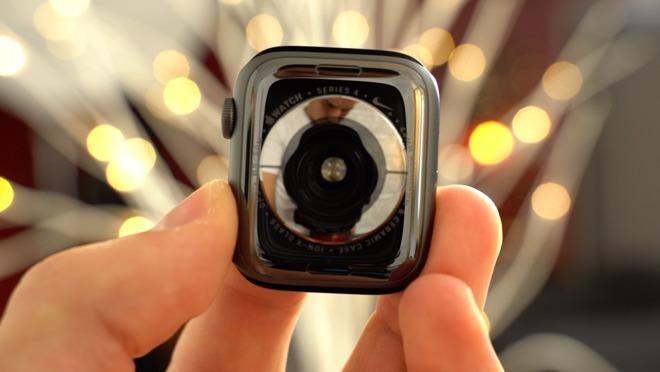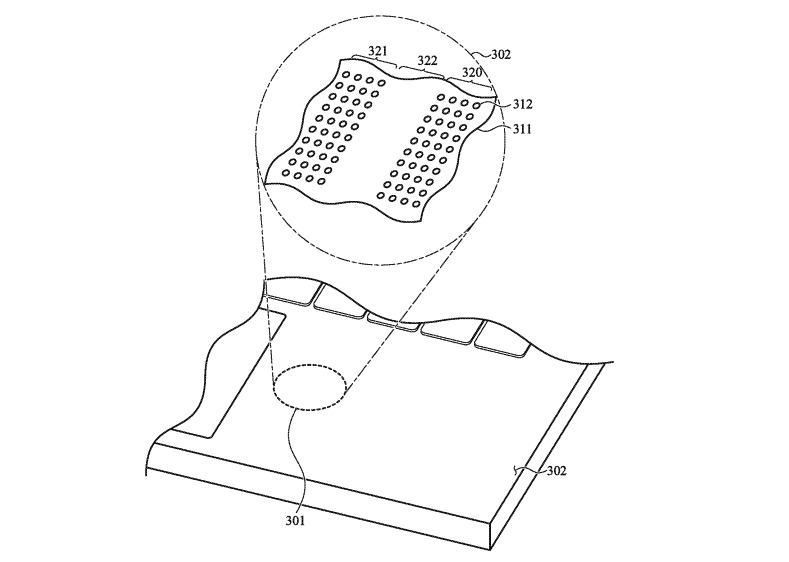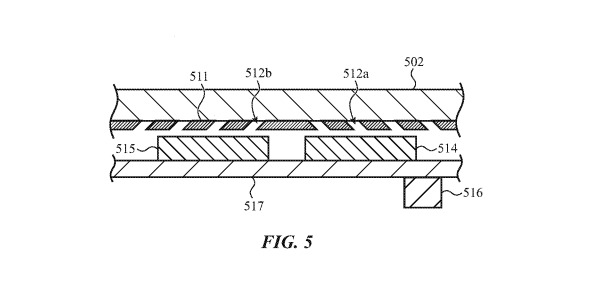Future MacBook models could offer some of the same health and fitness tracking functions as provided by the Apple Watch, with the inclusion of a small bio-sensor in the casing near the trackpad that the user could access while typing on the keyboard.
The Apple Watch has been celebrated for its ability to monitor the user's pulse through everyday life and in workouts. The fitness and health functionality, which most recently has extended to performing an ECG on the wrist as well as identifying potential Afib signs, is thought to have already saved lives,
While the functions are offered on the wearable device, Apple has yet to expand where it is used to other hardware, such as the iPhone or a MacBook. While the use of a large circular sensor like on the back of an Apple Watch would be too big to include on an iPhone, Apple is considering ways to make similar functionality available in some of its larger products.
A patent application, published by the U.S. Patent and Trademark Office on Thursday and titled "Portable electronic device having an integrated bio-sensor," describes how Apple could implement such a sensor within the casing of a physically large device, such as a MacBook.
Rather than taking the form of a dome-shaped glass circle that is in constant contact with the user's wrist, Apple's alternative suggestion is for it to instead be made up of two sets of micro perforations, rows of tiny holes next to each other made in the casing and protected by a transparent or translucent layer.
Functionally speaking, it would be similar in operation to the version of photoplethysmography used on the Apple Watch, with green LED light shone out of one set of holes and onto the user's skin. Light reflected back from the user's wrist is collected via the second set of holes, and is analyzed by the device's onboard systems.
The sensor would be able to detect multiple elements of a user's state, including heart rate, respiration rate, blood oxygenation level, blood pressure, and estimate the blood volume. With the addition of an infrared LED light source, it would also be able to detect water content in the user, which could increase the number of items it could measure.
According to the application, the sensor would be able to function using two different power levels, allowing it to perform less power-intensive functions the majority of the time, such as occasional heart rate monitoring, but also capable of performing at a higher level of performance when required.
Strategically placed near to the trackpad, the sensor would be in an ideal position to be in close contact to a user's wrist while typing on a MacBook. In theory this would allow for Apple Watch-style regular monitoring of the user's heart rate over time, whenever they are actively typing on the keyboard and are within range of the sensor to perform a reading.
The sensor would also offer a few more basic functions, such as detecting the presence of the user and preventing the MacBook from entering a sleep state. It could also be used to illuminate the keyboard and trackpad when the user is detected, without needing to touch either element.
Apple applies for numerous patents on a weekly basis, and while the publishing of patents and applications does demonstrate areas of interest for the company, it does not necessarily mean the described concepts will make their way into future consumer devices.
While the inclusion of a sensor in the Apple Watch may be an option in the distant future, Apple may already be looking to offer other ways for users to track their health.
The second generation of AirPods is tipped to include various health-related functions, chiefly including heart rate monitoring, but it could also extend to other measurements.
Apple is also continuing to increase its work in the health field, including its relationship with the FDA, which is used to clear medical devices. In December, it was reported Apple has as many as 50 medical doctors spread throughout the company, to help build up its existing health technology as well as new applications in the field.
 Malcolm Owen
Malcolm Owen










-m.jpg)






 Wesley Hilliard
Wesley Hilliard
 Marko Zivkovic
Marko Zivkovic



 Amber Neely
Amber Neely









7 Comments
OMG - let it monitor the health of keyboard instead.
This feature was actually suggested by a Qualcomm engineer. /s
I guess it wouldn’t be a bad thing to include in a Mac but seems to make less sense than on a wearable. For now it is a feature I would probably just shrug my shoulders at.